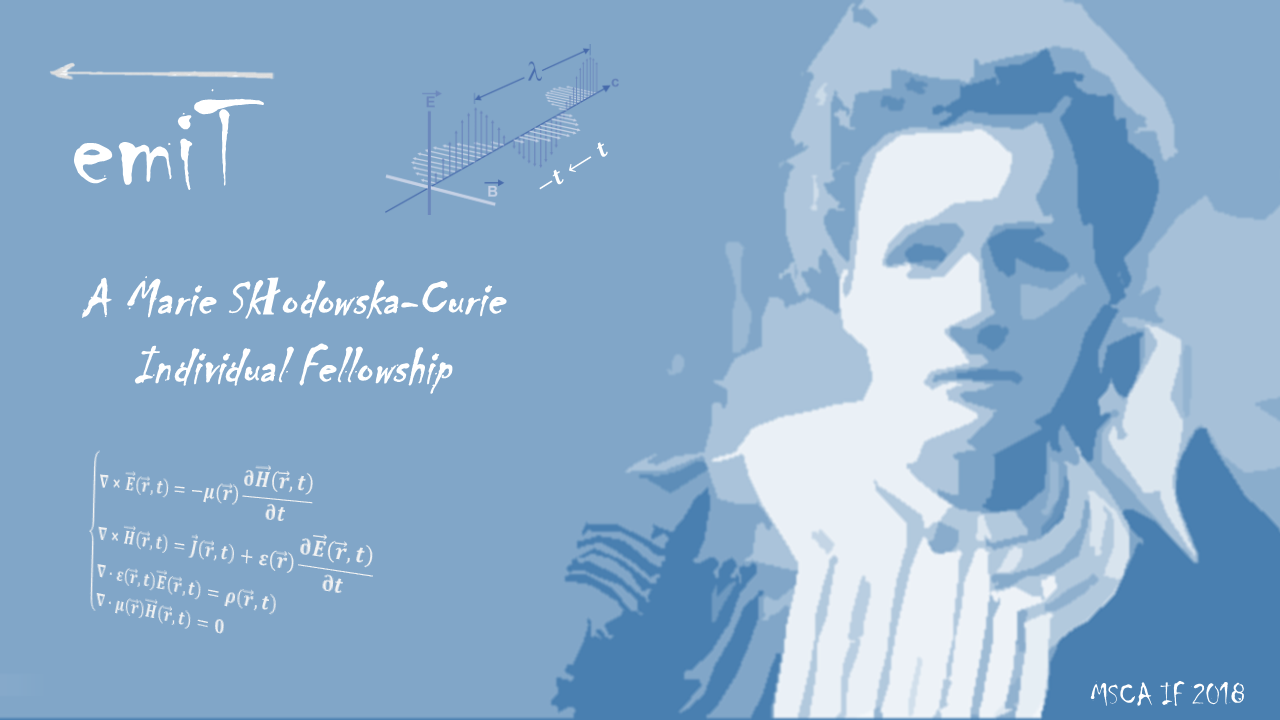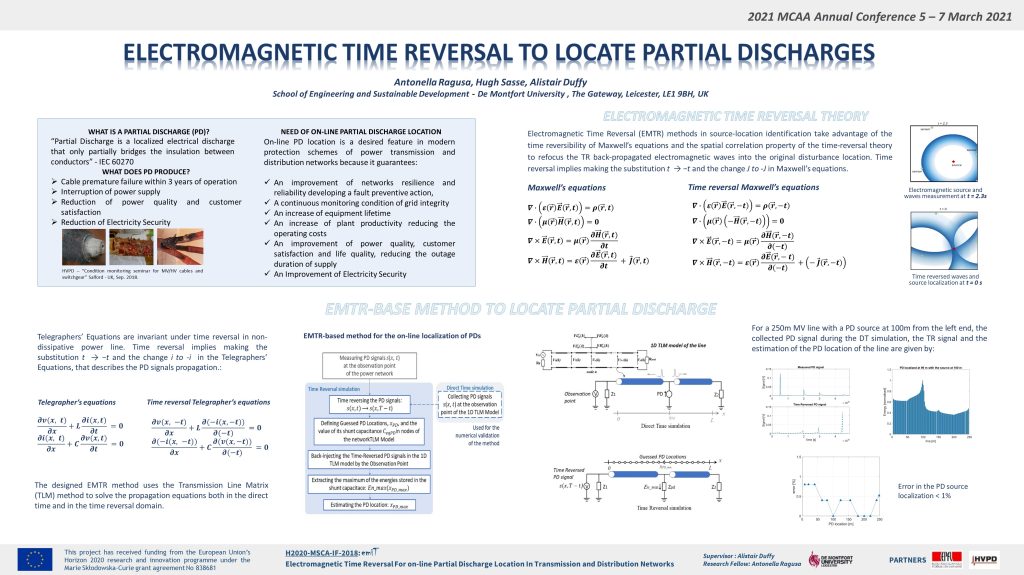CONFERENCE PAPERS
Each publications is open access at the DORA repository website of the De Montfort University. The data produced during the project and used to validate results presented in the published papers are open access at the DMU Figshare repository of the De Montfort University.
[5] A. Ragusa, H. Sasse, A. Duffy – “Time Reversal for Partial Discharge Localization on Power Lines with Different Termination Impedances” –The 2021 Asia-Pacific International Symposium on EMC (APEMC) Bali, Indonesia, 27-30 Sept. 2021. Click here to find data used to validate the published results.
Abstract: This paper describes a new method for the on-line location of partial discharges (PDs) in power transmission and distribution networks based on Electromagnetic Time Reversal (EMTR) theory and on the Transmission Line Matrix (TLM) method in order to describe the time reversed propagation. In particular, the paper shows the effectiveness of the method in localizing the PD source when the impedances at the terminations of the line are unknown and describes the procedure to be followed in this case. The analysis is performed in simulation, and a model of the PD signal propagation that is able to reproduce the distortion phenomenon that affect the PD signal propagation on power lines and thus the accuracy of the on-line PD location methods is also described.
[4] A. Ragusa, H. Sasse, A. Duffy – “A new method to localize partial discharges on power cables using time reversal and TLM numerical method – A review” – IWCS2021 Cable & Connectivity Forum, Virtual event, USA/Chicago, October 4-8, 2021. Click here to find data used to validate the published results.
Abstract: Insulation deterioration is often caused by partial discharge (PD) events. The adoption of on-line PD location methods is one of the most suitable methods to perform the power networks condition monitoring to improve their resilience and to guarantee electricity supply security. This paper reviews the results obtained in the design process of a new on-line PD location method based on the use of the electromagnetic time reversal (EMTR) theory and the Transmission Line Matrix (TLM) numerical method. Building on the work previously presented at the IWCS, where the method had been presented using two observation points, this paper shows further progress in this research and as a proof of its effectiveness, shows its ability in locating PDs using only one observation point. The procedure of the method is briefly described and its performance that overcomes the shortcomings of the traditional PD location methods are summarized. Finally, future related activities are described.
[3] A. Ragusa, H. Sasse, A. Duffy, “Electromagnetic Time Reversal to Locate Partial Discharges”, 2021 MCAA Annual Conference, 5 – 7 March 2021.
[2] A. Ragusa, H. Sasse, A. Duffy – “Detecting Electromagnetic Disturbances on Transmission Lines Using Time Reversal” – IWCS2020 Cable & Connectivity Symposium, Virtual event, USA/Chicago, October 11-October 14, 2020. Click here to find data used to validate the published results.
Abstract: Transmission lines can suffer a variety of electromagnetic disturbances. These can range from intentional interference, due to malicious intent, through to the effects of lightning strikes or partial discharge. Given a high-fidelity model of the transmission line, it is possible to take measurement data and ‘run time backwards’ to identify the source of the disturbance. This paper reviews the theory and implementation of electromagnetic time reversal, provides some examples from the literature, and illustrates its operation with current research to identify the source of a partial discharge event on Medium and High Voltage cables.
[1] Antonella Ragusa, Hugh Sasse, Alistair Duffy – “3D Simulation of Partial Discharge in High Voltage Power Networks” – IWCS2019 Cable & Connectivity Symposium, Charlotte, North Carolina, USA. Sept. 29 – Oct. 2, 2019. Click here to find data used to validate the published results.
Abstract: Partial discharge (PD) events arise inside power cables due to defects of cable’s insulation material, characterized by a lower electrical breakdown strength than the surrounding dielectric material. These electrical discharges cause signals to propagate along the cable, manifesting as noise phenomena. More significantly, they contribute to insulation degradation and can produce a disruptive effect with a consequent interruption of power network operation. PD events are, therefore, one of the best ‘early warning’ indicators of insulation degradation and, for this reason, the modeling and studying of such phenomena, together with the development of on-line PDs location methods, are important topics for network integrity assessment, and to define methods to improve the power networks’ Electricity Security. This paper presents a 3D model of PD events inside a void in epoxy-resin insulation cables for High Voltage (HV) power networks. The 3D model has been developed using the High Frequency (HF) Solver of CST Studio Suite® software. PD events of a few µs duration have been modelled and analyzed. The PD behavior has been investigated using varying electrical stress. A first study of the PD signal propagation in a power network is described.


